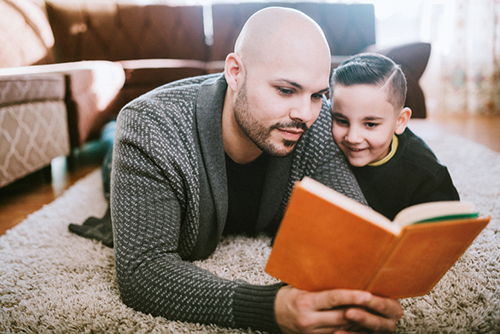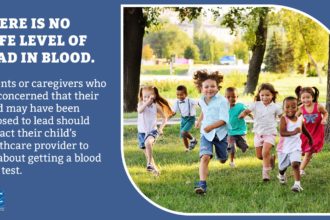When bullying occurs, it’s up to us to teach our kids how to respond and children’s books can help us with these important life lessons.
Bullying is a growing problem, affecting our schools and our communities. Increasingly, it is happening online, expanding the number of kids who get bullied and bully others.
The internet can provide a shield for bullies to hide behind, but it certainly does not protect the targets of bullying. The child who is being bullied feels the emotional or physical sting sharply and can feel powerless; classmates and online “friends” who witness the bullying often don’t know what to do; and the child doing the bullying is struggling, too, with anger issues and more.
The Powerful Bookshelf
Books can help kids process bullying as reading books allows children to see the world from different perspectives and build empathy. Children who can empathize respond to others with thoughtfulness and understanding. Why is my classmate wearing a headscarf indoors? A beautiful picture book about choosing a new hijab for the first day of school can open windows.
Through stories, children can meet characters who are dealing with strong emotions and who learn to manage those feelings in positive ways. What a powerful model for kids, especially when they’ve formed a personal bond with the vividly drawn characters.
Some children’s books tackle the tricky topics related to bullying, like how to handle conflicts at school or in the neighborhood. Sometimes it’s as simple as inviting the shy new kid to join in and play. Sometimes it’s about learning to find your own individual voice. And sometimes it’s about leaning on an understanding adult to help your classmates see your true strengths.
The messages in these stories can be subtle, yet powerful. They give kids a chance to reflect, think about their own beliefs and social interactions, and talk with their classmates and family about thorny issues.
How can schools and families work together to stop bullying?
It starts with creating a school culture that embraces and celebrates diversity and differences, has zero tolerance for bullying behavior, embeds social and emotional learning (SEL) opportunities in classrooms and school events, and provides guidance for teachers on responding to bullying in a direct, effective and loving way—supporting the child being bullied, the bystanders and the child who is bullying.
There are excellent online guides and toolkits for schools to use, including Eyes on Bullying Toolkit.
Social and Emotional Learning Reading List
Here are some of the books we recommend for strengthening social and emotional learning. Some of the books deal with bullying head-on.
Building Empathy, Perspective-Taking, Respecting Others, Fitting In
Ages 3-7
- All Are Welcome by Alexandra Penfold
- Bully by Laura Vaccaro Seeger
- Chrysanthemum by Kevin Henkes
- Freckleface Strawberry by Julianne Moore
- Last Stop on Market Street by Matt de la Peña
Ages 6-9
- The Can Man by Laura Williams
- Crow Boy by Taro Yashima
- Each Kindness by Jacqueline Woodson
- Families by Susan Kuklin
- The Hundred Dresses by Eleanor Estes
- I Walk with Vanessa: A Story About a Simple Act of Kindness by Kerascoët
- The Invisible Boy by Trudy Ludwig
- The Proudest Blue: A Story of Hijab and Family by Ibtihaj Muhammad
- Those Shoes by Maribeth Boelts
- Under My Hijab by Hena Khan
Building Awareness of Emotions, Self-Control
Ages 3-7
- Feelings by Aliki
- How to Be a Lion by Ed Vere
- Lilly’s Purple Plastic Purse by Kevin Henkes
Ages 6-9
- Anh’s Anger by Gail Silver
- Dear Mr. Henshaw by Beverly Cleary
- My Cold Plum Lemon Pie Bluesy Mood by Tameka Fryer Brown
- Zen Shorts by Jon Muth
Practicing Conflict Resolution Strategies
Ages 3-7
- Bootsie Barker Bites by Barbara Bottner
- Can I Play Too? By Mo Willems
- Louder, Lili by Jennifer Choldenko
Ages 6-9
- Clever Tortoise by Francesca Martin
- Enemy Pie by Derek Munson
- King of the Playground by Phyllis Naylor Reynolds
- Mr. Lincoln’s Way by Patricia Polacco
- The Recess Queen by Alexis O’Neill
- What James Said by Liz Rosenberg
Ages 8-10
- Jake Drake, Bully Buster by Andrew Clements
- Shredderman: Secret Identity by Wendelin Van Draanen
Books About Empathy, Perspective-Taking, Emotions and Conflict Resolution for Older Kids
Ages 9-12
- Bully by Patricia Polacco
- Eagle Song by Joseph Bruchac
- Front Desk by Kelly Yang
- Real Friends by Shannon Hale
- Smile by Raina Telgemeier
- They Call Me Güero by David Bowles
Reading Rockets is an online source for information about teaching young children to read and helping those who struggle.





